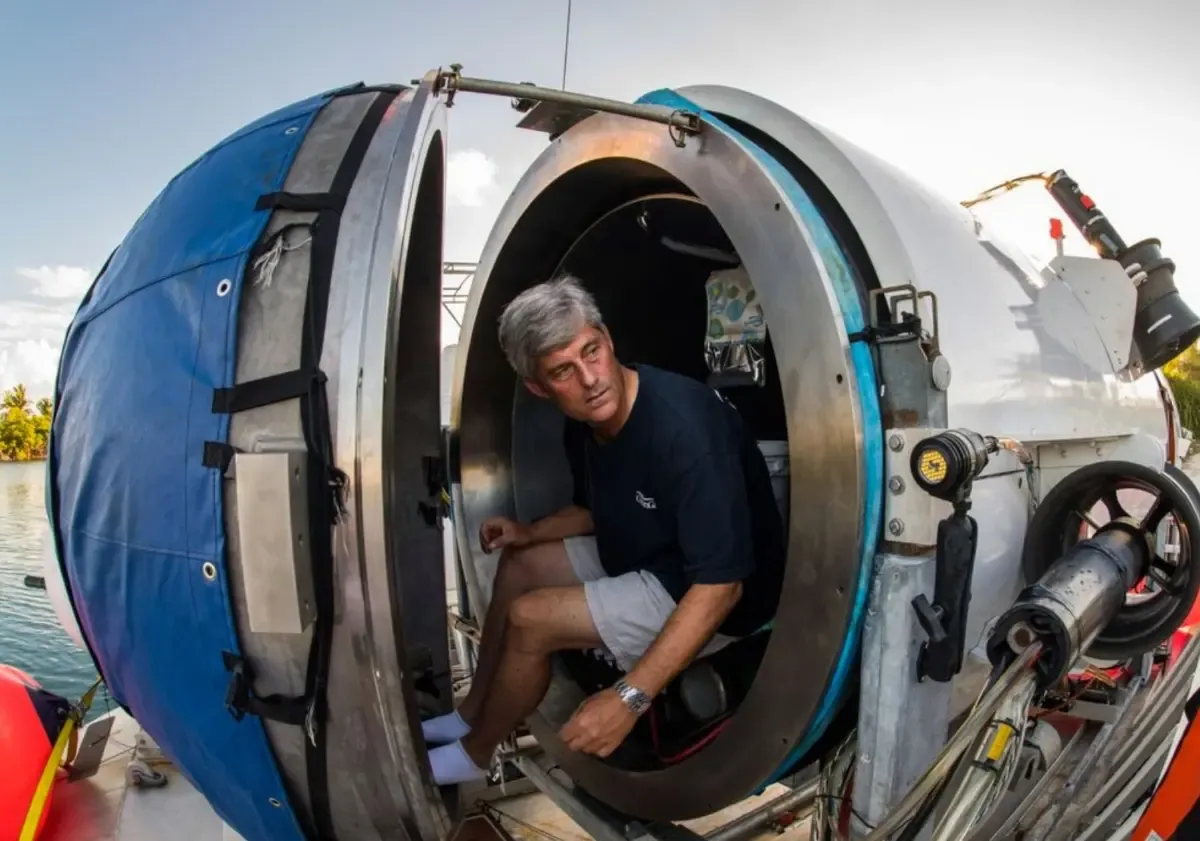The company that manages the missing submersible in North Atlantic in a tourist immersion to the wreck of titanic She was warned multiple times that the vehicle could suffer “from minor to catastrophic” safety problems, according to court documents.
David Lochridgedirector of maritime operations of Ocean Gatewrote an engineering report in 2018 stating that the vessel being developed he needed more evidence and that passengers could be in danger when he reached “extreme depths”according to a lawsuit filed that year in federal district court in Seattle.
LOOK: Why is it so difficult to find the missing Titan submersible in the Atlantic when it was going to explore the Titanic
OceanGate sued Lochridge that year, accusing him of breaking a confidentiality agreement.while he filed a countersuit alleging that he was illegally terminated for raise their reservations about safety and trials. The case was settled a few months into an agreement whose terms were not made public.
Lochridge’s concerns centered on the firm’s decision to base fault detection on sensitive acoustic monitoring, which detected sounds produced by the case under pressure, instead of a hull scan. Lochridge said the company justified itself by saying there was no equipment that could do those tests on a 5-inch-thick carbon fiber hull.
“This was problematic because this kind of acoustic analysis would only identify when a component was about to fail – often milliseconds before an implosion – and would not detect existing flaws before subjecting the hull to pressure,” the counterclaim stated.
In addition, the vehicle was designed to reach depths of 4,000 meters, equivalent to where the Titanic was. But, according to Lochridge, the passenger window was only certified for depths up to 1,300 metersand OceanGate did not want to pay the manufacturer to produce one certified to the proper depth.
The company’s decisionssubject passengers to possible extreme danger in an experimental submersible”, affirmed the countersuit by Lochridge, which warned that “paying passengers would not know or be informed of this experimental design”.
LOOK: How is Titan, the submarine that disappeared on an expedition to the Titanic (and how much does the trip cost)
However, the firm stated in its lawsuit that Lochridge “He is not an engineer and was not hired or commissioned to perform engineering services on the Titan”. He was fired after refusing to accept assurances from OceanGate’s chief engineer that the acoustic monitoring and testing protocol was actually a better system for detecting any failure than a scanner would be, according to the documents.
In an email statement, a company spokesperson said the missing vehicle was completed in 2020-21, so it would not be the same vehicle named in the lawsuit.
Ocean Gate also received another warning in 2018, coming from the Marine Technology Society, a professional group of 38 experts including ocean educators, policy makers, technologists and engineers, and expressed their “unanimous concern”.

In a letter to Rushthe association indicated that it was crucial that the firm subjected its prototype to tests supervised by an outside expert to the company before putting it into operation to safeguard its passengers. Rush had refused to do it.
The letter, reported by the The New York Timesexplained that members of the society feared that “the current experimental strategy adopted by OceanGate may lead to negative results (from minor to catastrophic) that would have serious consequences for everyone in the sector”.
Experts considered OceanGate’s marketing of the Titan “At the very least, misleading.” “His plan to not follow the qualifying guidelines was considered too risky.”pointed out Will Kohnen, president of the commission, in an interview on Tuesday, quoted by The New York Times.
“This letter basically asked them to please do what other submarines do, especially passenger ones.”said another of the signatories, Bart Kemper, a forensic engineer who works on submarine designs.
In a 2019 interview with the magazine smithsonianRush complained that industry strategy was stifling innovation.
“There hasn’t been an injury in the commercial submersible industry in over 35 years,” he said. “It’s obscenely safe because we have all these rules. But it hasn’t innovated or grown either, because they have all those rules”.
OceanGate CEO, Stockton Rushwho was piloting the missing submersible, last year defended his strategy in a speech at a conference in Seattle hosted by the technology news site GeekWire.
The official had previously driven a prototype up to 4,000 meters deep, and noted that “it made a lot of noise.” So he made a second dive, but it made the same disturbing noises, although it should have been much quieter. The company scrapped that helmetbuilt by a marine manufacturer, and built another with an aerospace supplier, Rush explained.
There is five people aboard the Titan, who could run out of oxygen in less than a day, according to rescuers, while a growing international fleet of ships and planes searched for the vehicle. The Everett, Washington-based underwater exploration company has made annual trips to the Titanic since 2021.
In the first good news since the search began, this Wednesday a Canadian aircraft detected underwater noisesalthough the submersible had not been located, according to the United States Coast Guard.
Agencies AP and AFP
Source: Elcomercio
I am Jack Morton and I work in 24 News Recorder. I mostly cover world news and I have also authored 24 news recorder. I find this work highly interesting and it allows me to keep up with current events happening around the world.

:quality(75)/cloudfront-us-east-1.images.arcpublishing.com/elcomercio/PVWEPYJGHNCSZPCMG6AIO44FR4.jpg)



:quality(75)/cloudfront-us-east-1.images.arcpublishing.com/elcomercio/ZPRRVLFLKFAELKZ2AGPPODYZSY.jpg)

